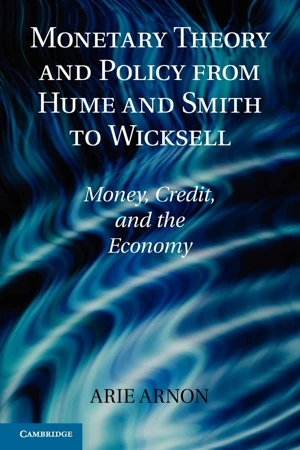Monetary Theory and Policy from Hume and Smith to Wicksell – Money, Credit, and the Economy

Blurb
This book provides a comprehensive survey of the major developments in monetary theory and policy from David Hume and Adam Smith to Walter Bagehot and Knut Wicksell. In particular, it seeks to explain why it took so long for a theory of central banking to penetrate mainstream thought. The book investigates how major monetary theorists understood the roles of the invisible and visible hands in money, credit, and banking; what they thought about rules and discretion and the role played by commodity-money in their conceptualizations; whether or not they distinguished between the two different roles carried out via the financial system - making payments efficiently within the exchange process and facilitating intermediation in the capital market; how they perceived the influence of the monetary system on macroeconomic aggregates such as the price level, output, and accumulation of wealth; and finally, what they thought about monetary policy. The book explores the analytical dimensions in the various monetary theories while emphasizing their policy consequences. The book highlights the work of a number of pioneering theoreticians. Among these Henry Thornton stands out, primarily because of his innovative analyzis of the complicated phenomena that developed after the introduction of an inconvertible monetary system in 1797. A major question addressed by the book is why theoreticians and policymakers were so resistant to his ideas for so many years.Book summary
In Monetary Theory and Policy from Hume and Smith to Wicksell, Arie Arnon explains the history of monetary theory and policy from the 18th century to the early 20th. Starting with Hume and his Price-Specie Flow Mechanism and by explaining each time the montary and financial context, Arnon depicts the different schools of monetary tought : the Real Bills Doctrine, the Quantity Theory, the Banking School, the Currency School, the Free Banking school etc. For each school or author, he explains how they integrated money in their theory, what they wanted to implement as policy and why and also how they explain and include credit and the role of the rate of interest. The main narrative of his book is the central banking theory, its theorization to its implementation.

